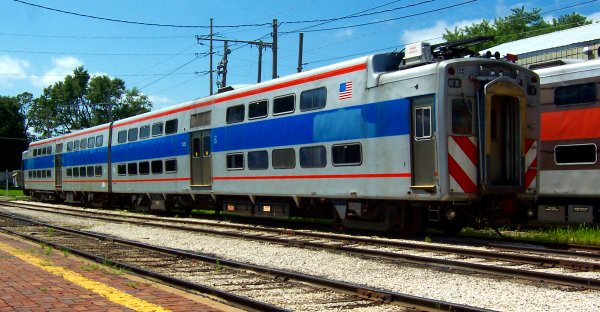Charles City Western, Car 50
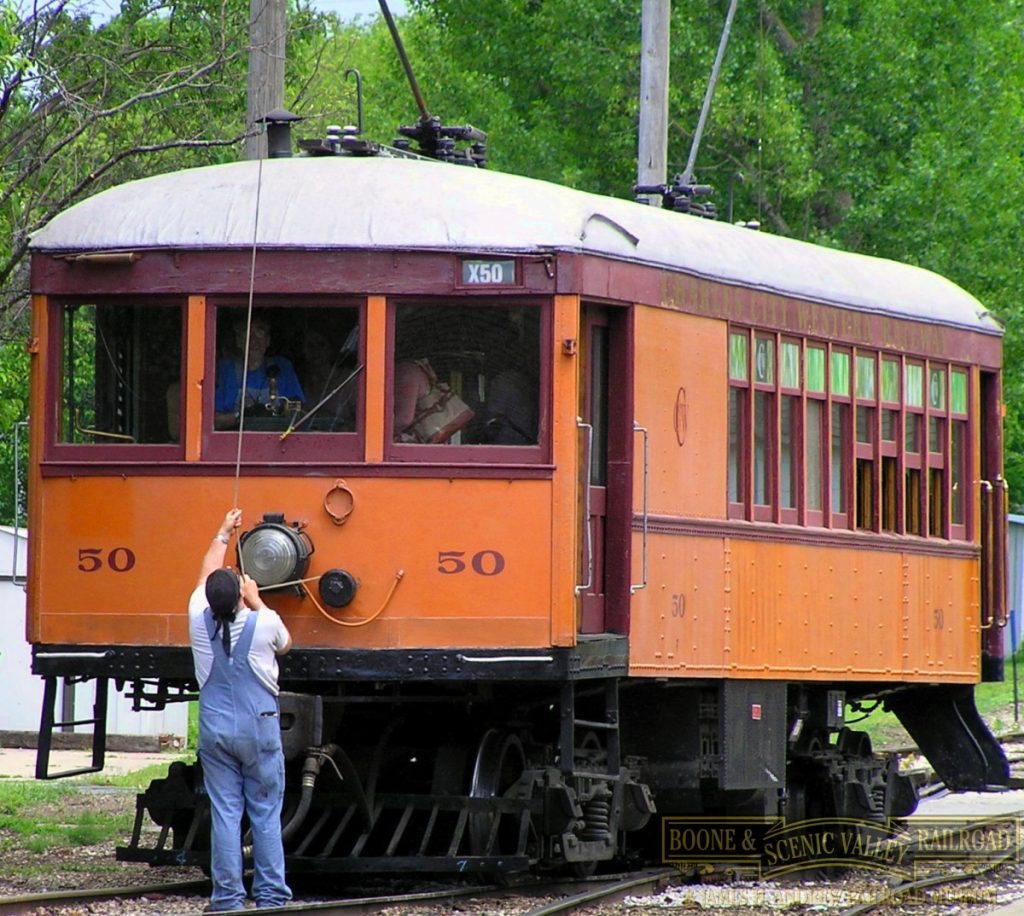

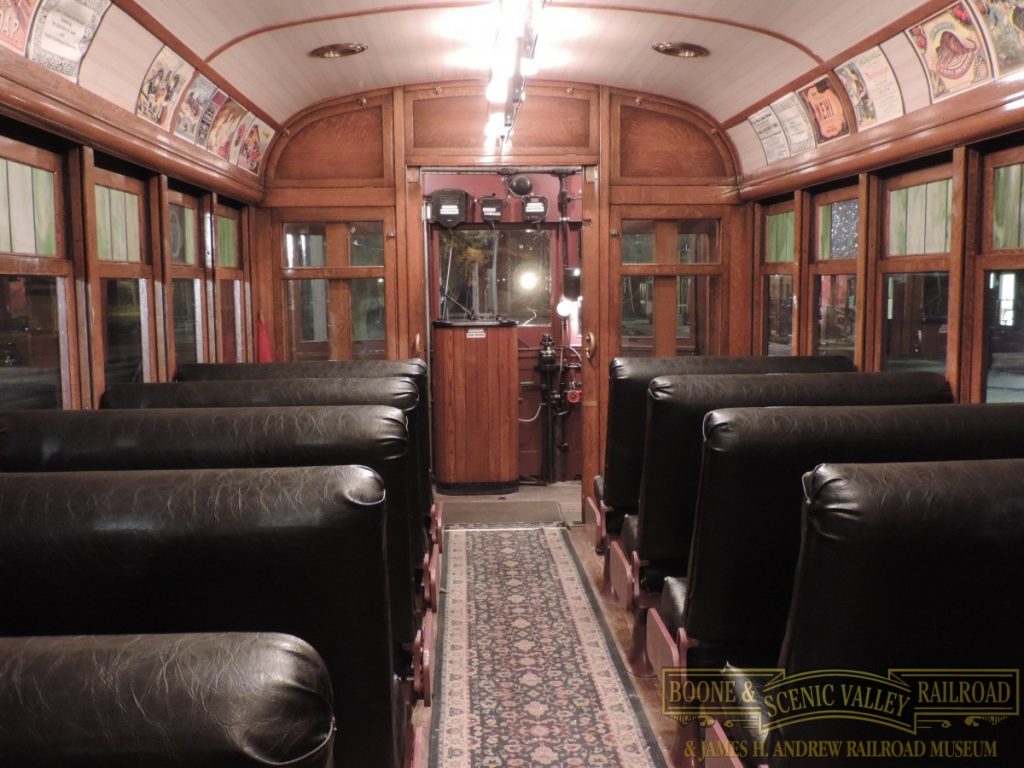
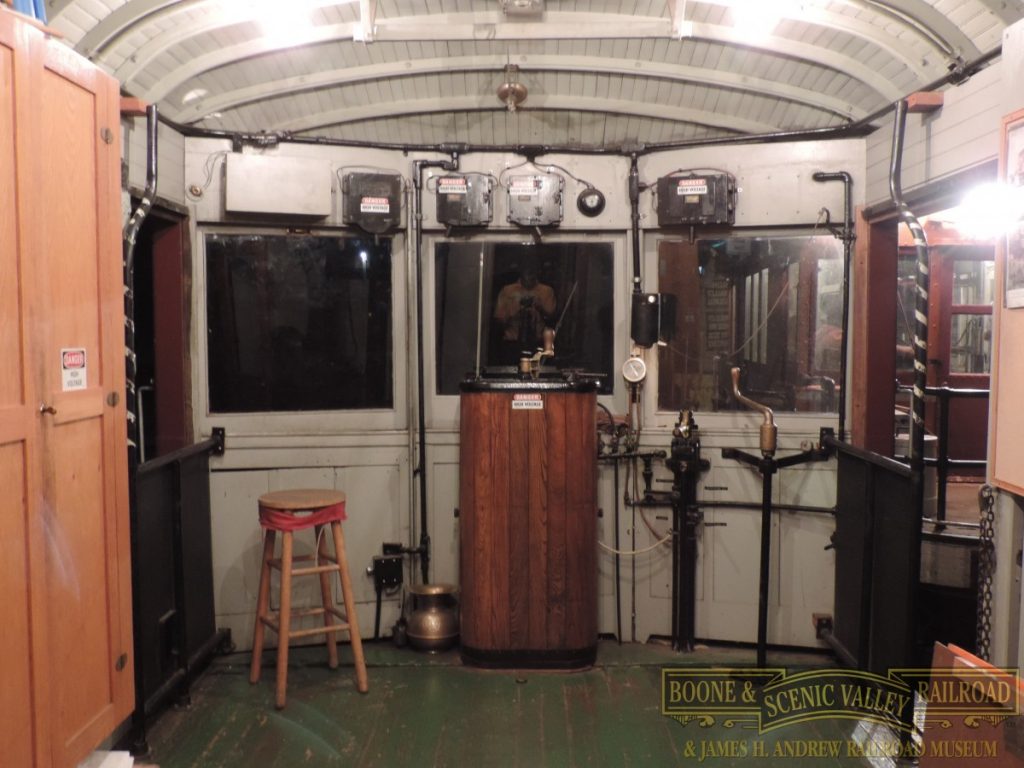

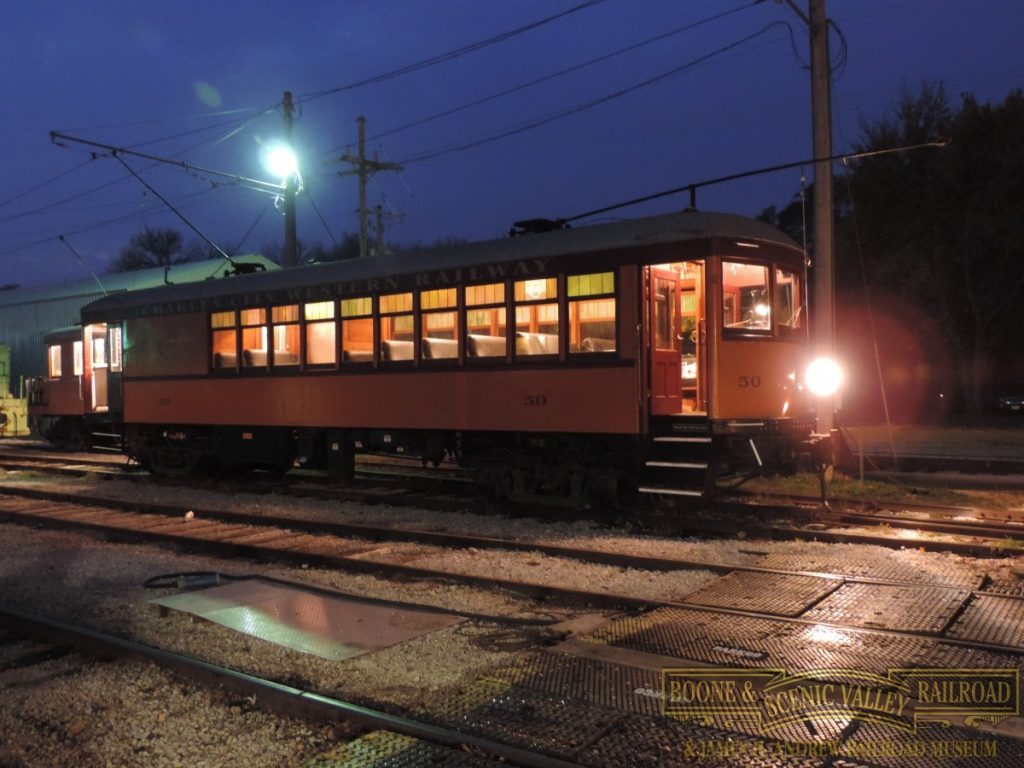
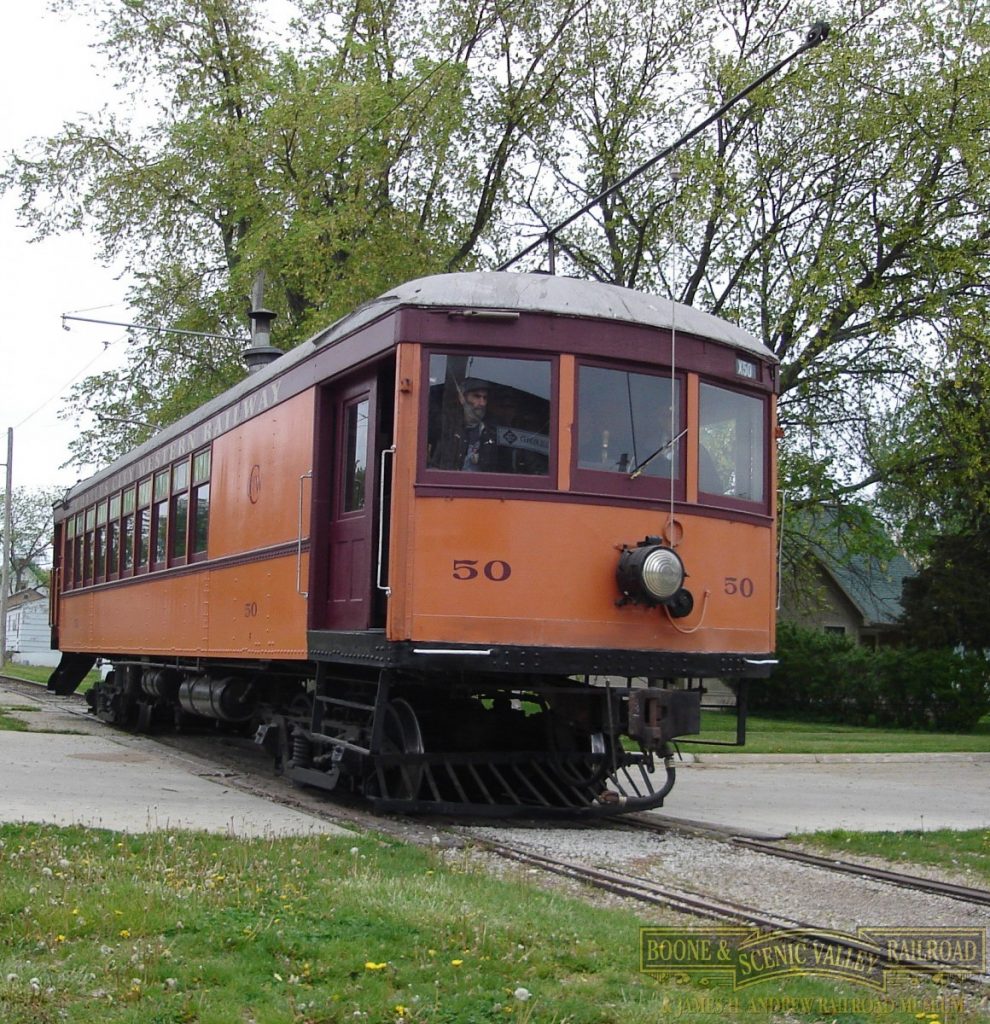
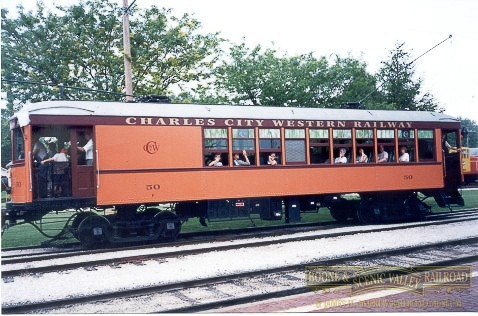

Car 50 was built by the Mc Guire-Cummings Company of Paris, Illinois in 1915. The builder’s photo shows that it was originally built and lettered for the CCW. Records indicate that it was originally painted in Pullman green. Sometime in its later life, it was painted in the present colors of orange and maroon. This car is a prime example of the combination baggage, mail and passenger type of interurban car that ran between cities and towns in more densely populated areas of the country. Car 50 ran between Charles City, Iowa and the nearby communities of Marble Rock and Colwell, all in the northeastern part of Iowa.
The car was heated by a coal fired furnace located in the baggage compartment, with ductwork along one side of the car directing the forced air heat to the smoker and passenger compartment.
This type of “interurban” car was powered by electricity provided by an overhead copper wire supplying the car as it sped through the countryside, free from soot or fumes. The “interurban era” of the country started in the late 1890’s and lasted up into the 1950’s, with a few surviving lines still serving the larger metropolitan areas of the country. It was the convenience of the automobile which led to the demise of this form of transportation.
Car Number 50 spent its entire service life on the Charles City Western Railway from 1915 to the end of regular passenger service in 1952. Occasionally it was used in later years for railfan and special trips until 1968 when a tornado damaged to “overhead” electric transmission system putting the car out of service permanently on the CCW. The car was put “in the barn” and left there until members of the Iowa Railroad Historical Society found it in 1987, and arranged for its purchase and delivery to Boone that same year.
The car was in excellent condition, probably never having spent a night outside its regular storage barn. The car had been painted inside with a light green latex paint, so popular in the 1950’s and 1960’s. The restoration of Car 50 involved removal of the old paint and varnish, uncovering the beautiful oak woodwork and paneling that you see today. Three coats of varnish were added. The car has been completely re-wired, and seats were found to replace those sold years ago.
The old window glass was replaced with safety glass. The stained glass in the upper sash is the original as found in the car.
The exterior of the car was brush painted by hand as it would have been in its earlier day. The original brass has been polished, the original light shades have been cleaned and replaced.
The car, as it was found in 1987, had almost no rust and very few pieces of wood that were in need of replacement. This is truly one of the rarest finds in a mint condition example of early American electric interurban passenger cars, sometimes referred to as a “trolley”, although that same term usually applied to the cars that plied the city street railways.
Chicago South Shore & South Bend Cars
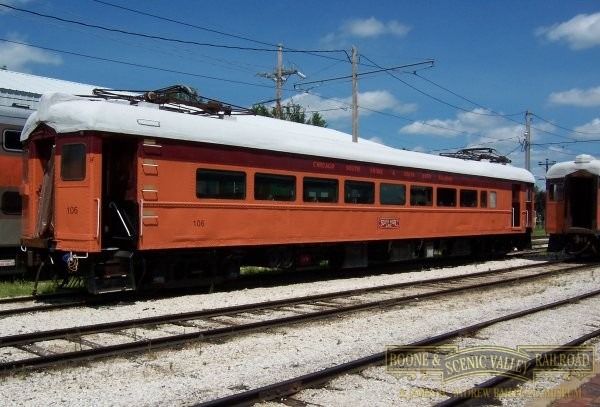
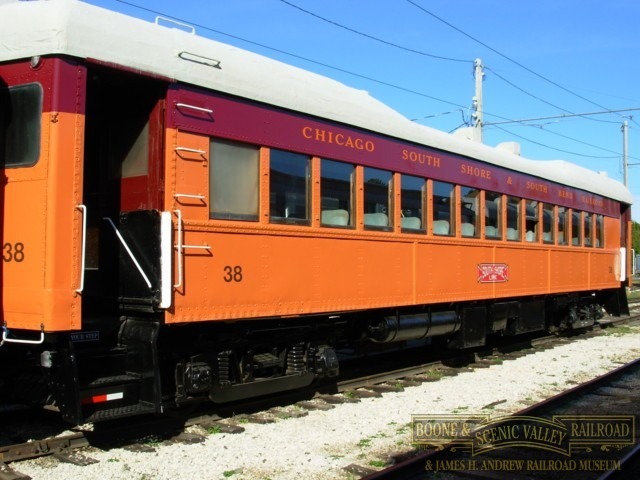
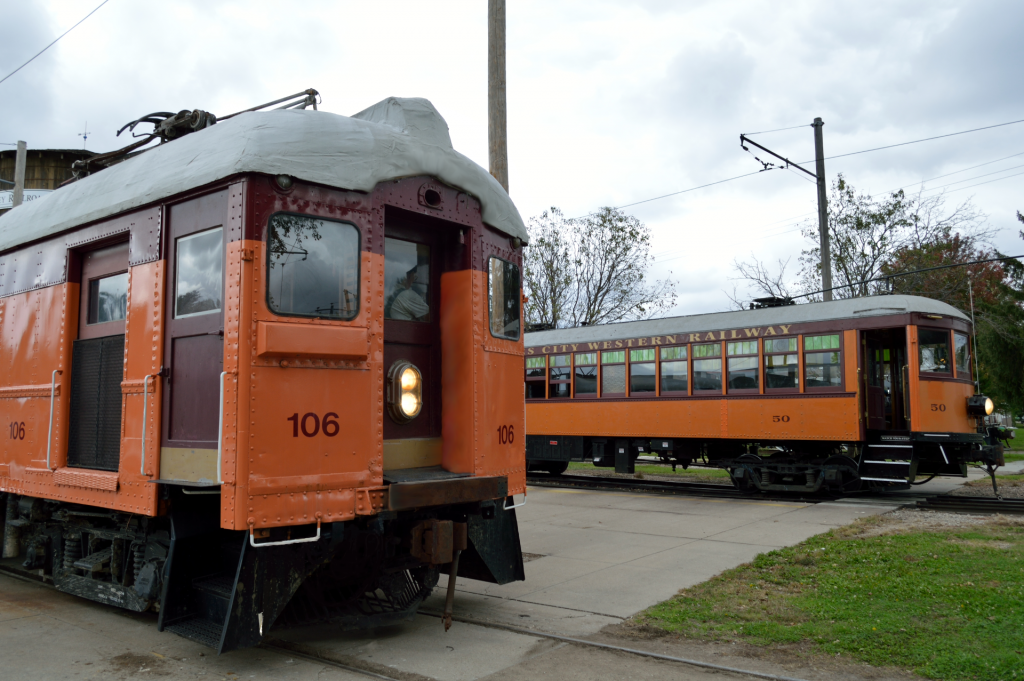
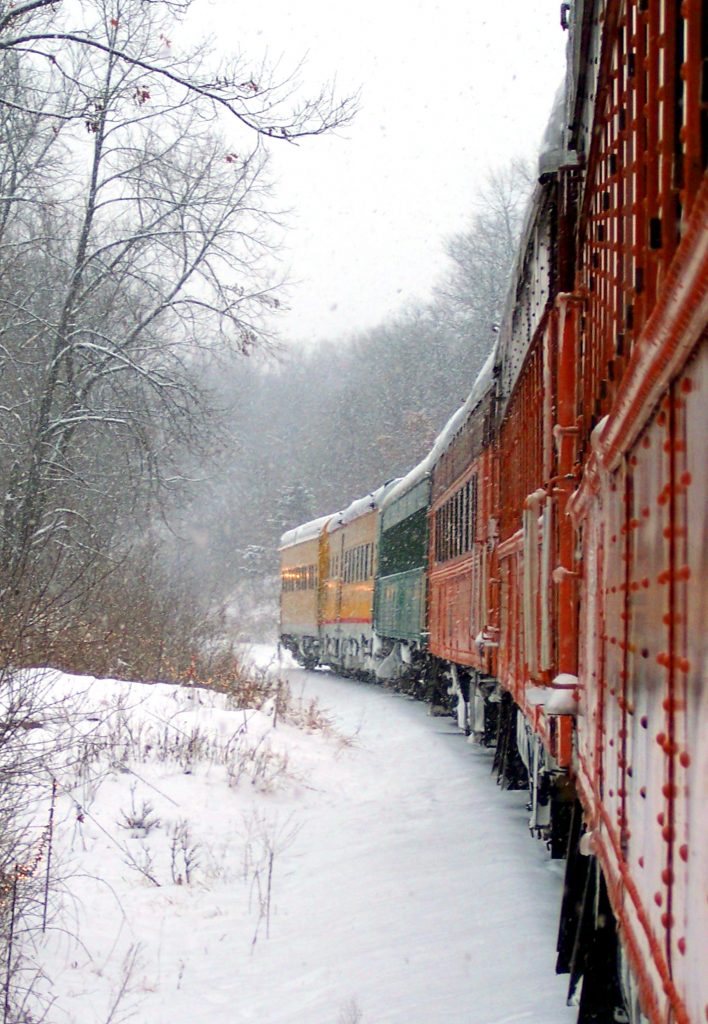
- These cars are former Chicago, South Shore & South Bend cars built in 1927.
- Cars 38 and 39 have been converted to trailer (unpowered) cars.
- Cars 102, 106, and 109 were lengthened and modernized after World War II.
- Cars 38, 39, and 106 are pressed into service during our busier times of the year, while cars 102 and 109 are on hand for parts salvage.
- Car 106 also makes trips between our depot and downtown Boone on select Saturdays from Memorial Day Weekend through October 31.
- These cars were purchased with the help of area businesses, and moved to Boone in 1984.
Metra Bi-Level Cars
- “Highliners” 1506, 1511, 1523, 1538, 1557, 1628
